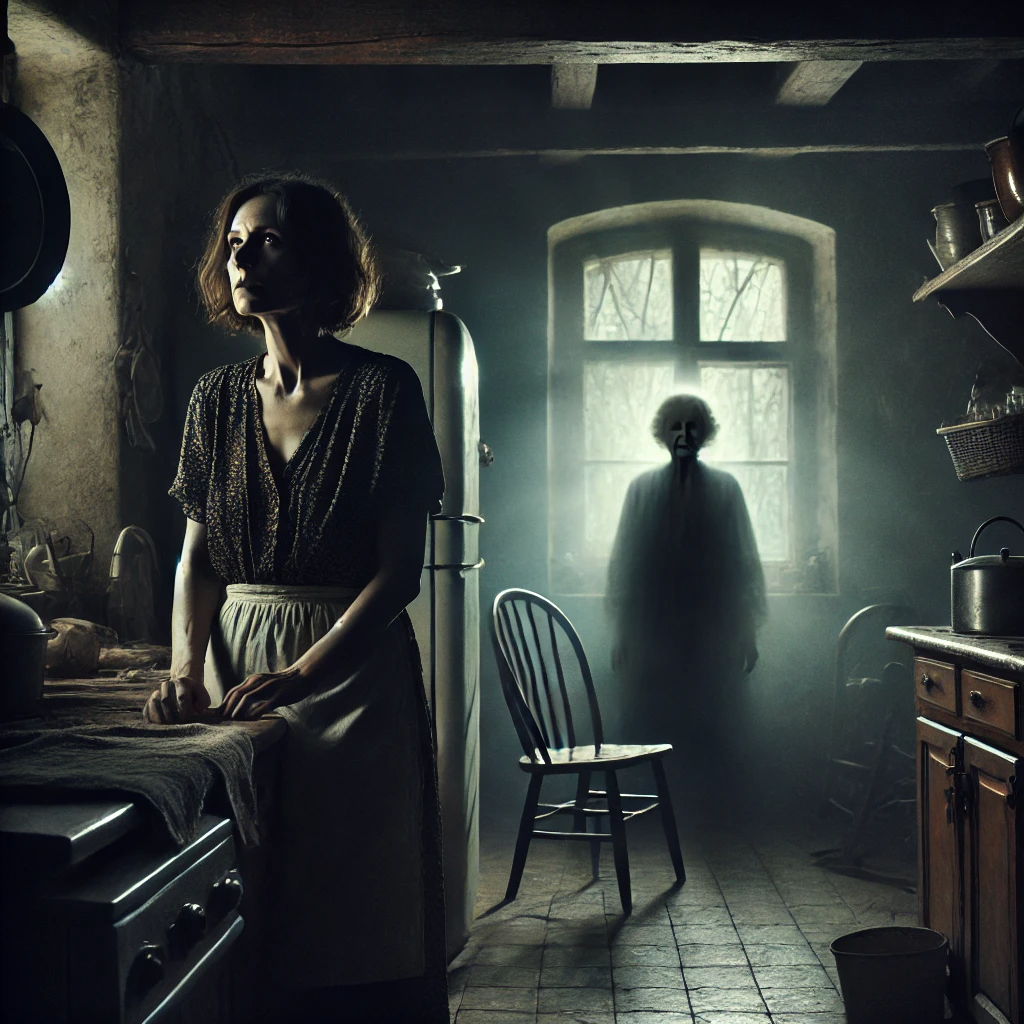The Technique of the Mystery Story by Carolyn Wells, published in 1913, serves as both a meticulous guide and a tribute to the enduring appeal of mystery fiction. With an approach that balances practical advice and literary appreciation, Wells unpacks the mechanics of crafting a compelling mystery, from plotting to character development, while celebrating the genre’s unique ability to stimulate curiosity and engage the mind. Her work appeals not only to aspiring mystery writers but also to readers fascinated by the art of suspense and puzzle-solving. As a seasoned mystery writer herself, Wells draws on her extensive experience to explore the genre’s psychological allure and defend its place in serious literature, framing the mystery story as a sophisticated narrative form that satisfies an ancient human craving to confront and understand the unknown.
Plot Summary
The world of mystery thrives on a single premise: curiosity. In the unfolding of a puzzle, there is something primal about the urge to know, to resolve what is hidden. This is a thread woven deeply into the human experience, as old as the tales told under moonlit skies, whispered between breaths of awe. In a society increasingly drawn to the unknown, this timeless thirst for understanding manifests through one of its most enchanting forms — the unraveling of a mystery.
The essence of this quest begins with a question, a riddle, or a crime whose solution lies far beyond the surface of appearances. Often it begins with something small — a faint suspicion, a misaligned detail, or the absence of expected facts. There is always a tension present, an imperceptible pulling of strings that nudges those with an investigative mind to probe deeper. And so begins the hunt, one that demands both intuition and sharp analytical thought.
Central to this journey is the figure of the detective. In essence, this individual is not just a pursuer of criminals but a seeker of truth hidden beneath layers of deception. The detective stands at the intersection of logic and emotion, recognizing patterns invisible to others, piecing together fragments of evidence that, at first glance, seem unconnected. Their greatest weapon is not physical prowess but an acute mind trained in the art of deduction.
One of the finest examples of this craft, it is said, was Dupin, a man of almost supernatural mental acuity. In Dupin’s hands, chaos became clarity. Where others saw disorder, he found logic. When a crime rattled the unsuspecting, it was Dupin who would walk into the scene with eyes that seemed to see beyond walls, into the very soul of the puzzle. He required little more than a single glance to comprehend the full scope of what had transpired, unraveling complex narratives that led, invariably, to the truth.
Yet Dupin’s success, like that of others who followed in his path, did not rest solely on intellect. His was an art that merged reasoning with an intuitive grasp of human nature. He understood not just the crime but the human impulses behind it. There is no plot without motive, no mystery without emotion, and so his strength lay in grasping the darkness that lurked in the minds of those who sought to conceal their misdeeds. Where others might falter, Dupin saw directly into the heart of human frailty, pulling the strings of truth until the entire web collapsed.
Alongside Dupin, another mind began to emerge on a similar stage. This figure, perhaps more widely recognized, was Sherlock Holmes, a man whose reputation preceded him long before he set foot on a crime scene. Holmes was methodical, his every action calculated. He did not rush to conclusions but allowed the facts to guide him to inevitable resolutions. His mind, like a well-oiled machine, processed every piece of evidence with the precision of a surgeon, discarding the irrelevant and honing in on the significant. The smallest clues became doorways to larger truths, whether it was a discarded glove or a smudge of ink on a paper.
Both Dupin and Holmes thrived on riddles — those intricately layered puzzles that demanded unraveling. It is said that every good mystery is built upon a foundation of enigma, where the facts are obscured by shadows, half-hidden in plain sight. This is the core of such tales: not the crime itself but the slow, deliberate unfolding of its solution. The detective, like a painter layering colors upon a canvas, adds brushstrokes of logic until the entire picture becomes clear.
But what is the force that drives these detectives to pursue their quarry? It is not simply the desire for justice, though that is an ever-present companion. No, their pursuit is rooted in something deeper, something primal — the need to know. The detective, in many ways, is driven by the same hunger that consumes the reader. It is a need for resolution, a compulsion to make sense of the chaos that surrounds them. Whether it is a tale of missing jewels, an unexplained disappearance, or a murder so brutal that it chills the soul, the detective steps forward with one purpose: to bring clarity to that which seems incomprehensible.
The act of resolving a mystery does not rely on intellect alone. There is an art to the game — an understanding that comes not from books but from experience and human insight. The greatest detectives do not just ask how or what but why. In doing so, they probe into the human psyche, uncovering motives that lay hidden beneath layers of pretense and lies. Often, it is not the crime itself that is so difficult to understand but the reasons behind it — the passions, the fears, and the desires that drive someone to commit acts of deception or violence.
Yet, even when the truth is uncovered, it rarely arrives with fanfare. The resolution of a mystery is often subtle, a quiet realization that brings with it both relief and a touch of melancholy. In the end, the mystery, like life itself, is complex. The answers that seemed so crucial at the beginning often reveal themselves to be both simpler and more tragic than imagined. As the detective lays bare the final pieces of the puzzle, there is a sense of completion but also an acknowledgment of the cost — the damage done, the lives altered, and the truths that, once uncovered, cannot be forgotten.
This is the essence of such tales, where the pursuit of truth is not just an intellectual exercise but an exploration of human nature itself. Every mystery is, at its core, a reflection of the world in which it exists — a world where logic, intuition, and emotion collide, and where the pursuit of answers becomes a journey through the deepest corridors of the mind.
Main Characters
While the book is largely instructional, it does mention key figures in detective fiction that influenced Wells’ ideas, including Edgar Allan Poe’s C. Auguste Dupin and Arthur Conan Doyle’s Sherlock Holmes. These characters, iconic in their analytical brilliance, serve as examples of the archetypal detective that later mystery writers strive to emulate.
- C. Auguste Dupin: A character from Poe’s early detective stories like The Murders in the Rue Morgue, Dupin is celebrated for his intellectual prowess and deductive reasoning. He is used as a model of how logic and observation can solve even the most baffling crimes.
- Sherlock Holmes: Arthur Conan Doyle’s famous detective, renowned for his almost superhuman attention to detail, logical rigor, and methodical approach to solving crimes, also serves as a template for aspiring writers.
Theme
- Curiosity and the Unknown: Wells emphasizes that the primary appeal of the mystery story is the reader’s desire to uncover hidden truths. This theme underpins most of the narrative techniques and plot structures in the genre.
- Logic vs. Intuition: Many mystery stories explore the balance between logical deduction and intuitive leaps, often embodied by the detective figure, who must blend reason with a “feel” for solving the crime.
- Justice: The resolution of a mystery often hinges on a moral framework where justice is served, even if the path to it is complex and non-linear.
- Surprise and Revelation: A central motif in the genre is the twist or revelation that subverts the reader’s expectations, keeping them guessing until the final pages.
- Psychological Depth: Wells touches on the psychological aspects of crime, how motive and character are central to the unfolding mystery, and how understanding a criminal’s psychology is often key to the resolution.
Writing Style and Tone
Wells’ writing is authoritative and instructional, with a clear aim to educate her readers on the complexities of crafting a mystery story. Her tone is enthusiastic, celebrating the mystery genre as a sophisticated form of literature, while also being practical and direct in giving advice. She frequently references both classic and contemporary works to provide concrete examples of her points, creating an informative, almost academic atmosphere.
- Analytical Precision: Wells employs a highly structured, logical approach to breaking down the elements of the mystery story, much like the detectives she admires. She organizes the content in a step-by-step manner, offering practical insights into everything from plotting to character development.
- Instructional Tone: The book maintains a didactic tone, as it is primarily intended to teach and guide writers. Wells presents her points with clarity and authority, using her own experience as a mystery writer to give readers a detailed look into the craft.
We hope this summary has sparked your interest and would appreciate you following Celsius 233 on social media:
There’s a treasure trove of other fascinating book summaries waiting for you. Check out our collection of stories that inspire, thrill, and provoke thought, just like this one by checking out the Book Shelf or the Library
Remember, while our summaries capture the essence, they can never replace the full experience of reading the book. If this summary intrigued you, consider diving into the complete story – buy the book and immerse yourself in the author’s original work.
If you want to request a book summary, click here.
When Saurabh is not working/watching football/reading books/traveling, you can reach him via Twitter/X, LinkedIn, or Threads
Restart reading!








